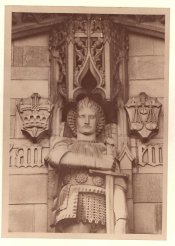Anton Lukoszevieze
Member
- Joined
- Oct 1, 2006
- Messages
- 383
- Format
- Analog
Sanders,
I cannot say if this process would work. But, it is a very easy process to test. Some people think one has to have a very contrasty neg. for salt prints, I don't entirely agree, it depends on the subject, etc. I don't intensify my negs. either, which some people believe is necessary for wet-plate negs.
What size are your negs? Small negs. don't work so well for alt. processes, 5x4, 5x7, etc. and up is best.
So, I suggest you try making a salt print, it is fun!
I cannot say if this process would work. But, it is a very easy process to test. Some people think one has to have a very contrasty neg. for salt prints, I don't entirely agree, it depends on the subject, etc. I don't intensify my negs. either, which some people believe is necessary for wet-plate negs.
What size are your negs? Small negs. don't work so well for alt. processes, 5x4, 5x7, etc. and up is best.
So, I suggest you try making a salt print, it is fun!





 I learn something every day from APUG
I learn something every day from APUG 